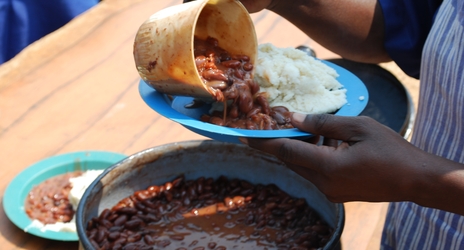PERSPECTIVAS DE LA ECONOMÍA MUNDIAL
Se pueden encontrar, incluso dentro del FMI y la OCDE, economistas inquietos que denuncian al capitalismo. El abismo entre su diagnóstico y sus recomendaciones es otro síntoma de la profundidad de la crisis actual.
Maurice Obstfeld es director de investigaciones en el FMI. Su reciente presentación a la prensa de las últimas Perspectivas de la Economía Mundial del FMI/1 se produjo bajo el signo del pesimismo y el desconcierto. Ciertamente, afirmó que “no estamos en crisis”. Pero su fórmula, tomada de su presidenta Christine Lagarde, de que “no estamos en estado de alarma, sino en estado de alerta”, no resulta en el fondo nada tranquilizadora. Ya que el diagnóstico de conjunto es: “el crecimiento mundial continúa, pero a un ritmo cada vez más decepcionante, exponiendo a amenazas a la economía mundial. El crecimiento ha sido demasiado débil desde hace demasiado tiempo”.
Por “amenazas” hay que entender acontecimientos financieros, económicos o políticos que desestabilizarían aún más la economía mundial. Para hacerlas frente, la FMI recomienda una política con tres ejes: monetario, presupuestario y sin olvidar las inevitables “reformas estructurales”. Uno de los periodistas presentes reaccionó con algo de impertinencia ante el enunciado de este programa: “Hace ya 20 años que asisto a estas reuniones. Y siempre oigo las mismas cosas, una y otra vez. Usted ha dicho financiero, estructural y monetario. Pero como usted ya sabe, el monetario está casi agotado, el presupuestario está fuera de alcance para muchos. En cuanto al estructural, requiere un tiempo muy largo. En estas condiciones, ¿qué hay que hacer para mejorar la situación a corto plazo?”
Christine Lagarde:
“no estamos en estado de alarma”
Respuestas equivocadas de medio a medio
Excelente pregunta, que describe muy bien las angustias del FMI: se ven las amenazas, pero sus repetitivas propuestas están completamente equivocadas. Así, Obstfeld cita la salida de capitales de los mercados emergentes como ejemplo de los “episodios de turbulencias” que tanto teme. En lugar de hablar de los instrumentos que permiten regular el tipo de cambio –que es en teoría una de las principales misiones del FMI– se remite al capítulo 2 de las Perspectivas/2 que, en su opinión, demuestra que la mayor parte de los países emergentes “han conseguido hacer frente”. Es bastante alucinante, si se piensa por ejemplo en el impacto que ha provocado en Brasil la brutal retirada de capitales.
El gráfico adjunto permite recordar la historia. Muestra cómo el real brasileño se revalorizó considerablemente desde comienzos de 2003: el tipo de cambio del real pasó de 0,28 dólares a 0,62 dólares a comienzos de 2011. Es cierto que la crisis lo había hecho caer en 2009, pero la resistencia de los BRICS tranquilizó a los inversores, atraídos por una elevada rentabilidad. Pero a mediados de 2011 se retiraron: fue el sudden stop, la interrupción brutal de las entradas de capitales, que desencadenó una caída continua del real, equivalente a una devaluación del 60 % respecto al dólar. Se puede discutir cuál debería ser el tipo de cambio adecuado, pero una cosa es segura: no es gestionable una economía tan expuesta a la volatibilidad de los capitales.
Gráfico
Tipo de cambio del real respecto al dólar

Sólo es economía: Obstfeld se ha dado cuenta también de que “ en muchos países, la débil progresión de los salarios y las crecientes desigualdades han conducido a la extendida idea de que el crecimiento económico ha beneficiado sobre todo a las élites económicas”. No se sabe si comparte este punto de vista, pero la única consecuencia que deduce es que avanzan las actitudes nacionalistas y hay menos “derecho al error”.
En cuanto a las famosas reformas estructurales, el capítulo 3 de las Perspectivas/3, dedicado a ellas, lanza un mensaje prudentemente equilibrado: aunque “aumentan la producción y el empleo a medio plazo” (como todo el mundo sabe), tienen sin embargo que ir acompañadas de “políticas macroeconómicas complementarias para maximizar su efecto a corto plazo, dada la situación de subempleo en la mayor parte de las economías avanzadas”. Algunas reformas incluso pueden “volverse recesionistas en período de ralentización”. La recomendación del FMI es por tanto “establecer con cuidado el orden de prioridades y el calendario de puesta en marcha de las reformas”. Traducción: las reformas estructurales son seguramente una excelente idea, aunque tal vez no en una coyuntura recesiva.
El mismo “estado de alerta” se encuentra en el Monitor de las Finanzas Públicas (Fiscal Monitor), publicado al mismo tiempo/4. El cuadro que presenta es también inquietante: “los ratios de deuda pública se han deteriorado en casi todas partes y las finanzas públicas se han vuelto más vulnerables”. Según el FMI, es el resultado de la “debilidad persistente de la actividad económica”, que evidentemente no tiene nada que ver con las políticas de austeridad (o mejor dicho de saneamiento presupuestario, según la jerga neoliberal), cuya eficacia es elogiada en el propio informe. De este panorama, el director del Departamento de Finanzas Públicas del FMI, Vitor Gaspar, deduce este resplandeciente principio: “todos los países deben adaptarse a estas nuevas realidades, pero no hay solución única”. ¿Qué política presupuestaria hay que llevar a cabo en estas condiciones? Debe ser “favorable al crecimiento, sobre todo con medidas que estimulen el crecimiento a corto y a medio plazo”. ¿También en Grecia?
Todo ello revela un profundo desconcierto, que es fácil de explicar: el FMI señala con lucidez los disfuncionamientos del capitalismo mundial, pero las eventuales soluciones que podrían pensarse se escapan a su radar neoliberal.
Inversión: el sector privado no quiere, el público no puede
Hace un año, en sus anteriores Perspectivas de la Economía Mundial/5, el FMI ya se mostraba pesimista y se preguntaba por las razones del débil dinamismo de la inversión. Como en el caso del aumento de la deuda, lo explicaba de forma bastante tautológica, por la “debilidad general de la actividad económica”. Es verdad que la debilidad de la acumulación de capital es una característica esencial del actual período. Pero se merece un examen menos superficial.
Un estudio del Banco Internacional de Pagos/6 aporta a esta cuestión un punto de vista mucho más interesante. Sus autores comienzan por recusar la teoría de que la inversión estaría frenada por un crédito demasiado caro o forzado. Citan también la incertidumbre, pero le dan un contenido concreto: “podría ocurrir que las empresas prevean un retorno de la inversión inferior al coste del capital ajustado por el riesgo y comparado con las rentas que podrían obtener de activos financieros más líquidos”. Y aún cuando las empresas están relativamente confiadas sobre las perspectivas de la demanda, pueden “tener reticencias en invertir si piensan que la rentabilidad del capital adicional será débil”. La cuestión clave es por tanto “la falta de ocasiones de inversión rentables”.
Otro factor que pesa sobre la recuperación de la inversión es la lentitud del proceso de desendeudamiento (deleveraging). Entre 2007 y 2014, la suma total de las deudas, públicas o privadas, ha aumentado en 57 billones de dólares a escala mundial, y el ratio deuda/PIB en 17 puntos/7. Esta progresión afecta también a la deuda de las empresas que sigue creciendo rápidamente en algunos países: ha aumentado en 18 billones de dólares, pasando del 72,5 % del PIB mundial al 80,5 %, entre 2007 y 2014. Y el Global Institute McKinsey subraya que esto “implica nuevos riesgos para la estabilidad financiera y podría afectar al crecimiento económico mundial”.
Si la iniciativa privada ha perdido confianza porque escasean las ocasiones de inversión rentable, la inversión pública podría tomar el relevo. Esta idea ha dado lugar a múltiples propuestas, procedentes sobre todo de sindicatos o de economistas heterodoxos. Todas ellas insisten en el papel de la intervención pública en el desarrollo de las infraestructuras y en dirigir la transición ecológica. Sería la vía a seguir y todas estas contribuciones tienen gran utilidad para revalorizar la intervención pública en estrecha relación con el paso a un nuevo modelo de desarrollo.
Pero todas ellas chocan con esta contradicción fundamental: ¿cómo conciliar un relanzamiento de la inversión pública con las políticas de ajuste presupuestario? Esta contradicción es particularmente flagrante en el caso de la Unión Europea que ha “constitucionalizado” en la práctica la prohibición de cualquier nuevo endeudamiento y ha insistido en reducir al mínimo el presupuesto europeo.
Esto da lugar a diversas contorsiones retóricas. Por ejemplo, France Stratégie/8 identifica tres sectores prioritarios (transportes, energía e informática) pero añade a continuación esta cláusula de estilo: “dadas las actuales obligaciones presupuestarias, es imperativo seleccionar con cuidado las inversiones estudiadas, validando su utilidad social”. El FMI cree que ha llegado la hora de un esfuerzo (push) en materia de infraestructuras/9, y asegura que “proyectos financiados con deuda podrían tener grandes impactos sin aumentar el ratio deuda/PIB”, pero añade esta condición: “si es una inversión eficaz que responde a necesidades en infraestructuras claramente identificadas”.
En cuanto a la Comisión Europea/10, reconoce que “inversiones públicas en infraestructuras bien enfocadas pueden ser útiles en algunos casos”, pero añade a contunuación que “deben tenerse en cuenta las condiciones macroeconómicas, incluidas las obligaciones presupuestarias y la necesidad de aumentar la financiación privada”. No se podría subrayar mejor la prioridad dada de forma más o menos explícita a la iniciativa privada, y el creciente divorcio entre los criterios de rentabilidad y los que dan prioridad a la eficacia social y medioambiental.
Los salarios: ganancias contra mercados
Una idea se está abriendo camino: una revalorización de los salarios podría relanzar la actividad económica y reducir las desigualdades. Podría decirse incluso que el salario mínimo está de moda. En enero de 2015, se instituyó en Alemania un salario mínimo de 8,50 € la hora, sin que ello provocase la destrucción de 200 000 empleos como anunciaron los economistas neoliberales. Como lo demuestra Ronald Jansenn/11, consejero de la Comisión sindical consultiva ante la OCDE, el salario mínimo ha tenido en cambio el efecto de “forzar a los empleadores a ofrecer empleos ‘normales’, cubiertos por la seguridad social”. Una interesante lección que muestra a contrario que la flexibilidad no crea empleos sino que “permite a los empleadores transformar empleos regulares en empleos precarios o mal pagados”.
El pasado 1 de abril, David Cameron, primer ministro británico, decidió aumentar el salario mínimo en un 7,5 %. Pasaría a 9,10 € la hora (frente a 9,67 € en Francia), y debería aumentar un 40 % de aquí a 2020. En los Estados Unidos, el salario mínimo federal está bloqueado en 7,25 $ desde 2009. Barack Obama querría hacerlo subir a 10,10 $ antes de su marcha, Hillary Clinton duda entre 12 $ y 15 $, y Bernie Sanders reivindica claramente los 15 $. El Estado de Nueva York y California ya han decidido subirlo a 15 $, de aquí a 2018 y 2022. En Rusia, el salario mensual mínimo va a aumentar un 20 % y pasará a 7500 rublos (unos 98 €). Y se sabe que en China los salarios han aumentado a un ritmo de más del 10 % anual desde hace algunos años/12.
Hay una enorme contradicción con las llamadas políticas de competitividad que pretenden hacer bajar el “coste del trabajo”. Es la contradicción clásica entre ganancias y mercados, que Patrick Artus ha sabido resumir con mucha ingenuidad: las “políticas económicas de recuperación salarial, de reducción de las desigualdades salariales, pueden ser peligrosas si no van asociadas a la aceptación por parte de las empresas de una menor rentabilidad del capital«/13.
Las deudas: ¿nunca reembolsadas?
Otro motivo de inquietud preocupa a William White, el presidente del Comité examinador (Economic Development and Review Committee) de la OCDE/14. Cuando era economista jefe del Banco Internacional de Pagos, advirtió, junto con su colega Claudio Borio, de los riesgos de una crisis antes de que ésta estallase en 2008. Hoy piensa que la situación “es peor de lo que era en 2007” y que “hemos agotado todas las municiones macroeconómicas de que disponemos para hacer frente a los cambios de coyuntura”. La razón es la acumulación de deudas, propulsadas sobre todo por las políticas monetarias: “siempre ha sido peligroso confiar a los bancos centrales la tarea de resolver un problema de solvencia (…) Eso sólo puede llevar al desorden, y hay día alcanzamos el límite”.
“En el Banco Internacional de Pagos hemos dirigido
muchos buenos consejos a los bancos centrales,
pero por desgracia nadie nos ha escuchado”
Según White, la próxima recesión debería mostrar que una gran parte de las deudas acumuladas, públicas o privadas, “nunca podrán ser liquidadas ni reembolsadas”. Los gobiernos deberían adoptar “un enfoque más sistemático de reducción de deudas”. Y White no duda en incitar a los responsables públicos a “prestar más atención al crecimiento de los salarios, que se mantiene demasiado débil”. Aunque dicho en lenguaje diplomático, es un mensaje al que la OCDE no nos tenía acostumbrados.
Wwite resume bien el desconcierto de los más lúcidos economistas dominantes cuando declara que “los economistas han cometido un profundo error ontológico, postulando que la economía es comprensible. Y han inferido de ello que la podían comprender, y también la podían controlar”.
Se comprende este desconcierto ante un capitalismo manifiestamente trastornado al que nadie parece querer atajar: “dinero en todas partes, crecimiento en ninguna”, nos dicen tanto Le Monde como Le Figaro. Y esta vez es el lector quien queda perplejo cuando descubre que el propio The Economist se pregunta si no habrá “demasiadas ganancias”/15 y llega a reconocer que Hillary Clinton y Bernie Sander tienen razón cuando dicen que la economía está “trucada” (rigged), porque ganancias demasiado elevadas “puede significar que hay empresas más aptas para engullir riqueza que para crearla”.
William White: La macroeconomía moderna se funda
en una creencia errónea
Esta conclusión aclara y matiza la oposición entre keynesianos y marxistas sobre el análisis del período. A riesgo de caricatura, podría resumirse el debate de esta manera: los keynesianos dicen que es una política absurda no relanzar la demanda; y los marxistas replican: no es verdad, se trata de una política racional, porque pretende sostener la tasa de ganancia. Las políticas neoliberales tienen en el fondo dos objetivos: restablecer la tasa de ganancia y garantizar el capital ficticio, o dicho de otra manera los derechos de emisión del “1 %” sobre la plusvalía. Pero continuar estos objetivos, que sería lo racional desde el punto de vista de los intereses de los dominadores, engendra toda una serie de “turbulencias” en el funcionamiento del capitalismo: la acumulación del capital no llega a despegar, los mercados se frenan, y las deudas privadas o públicas conducen a una presión insostenible sobre la actividad económica. Retomando la fórmula de Artus, haría falta que las empresas “acepten una menor rentabilidad del capital” y, como subraya White, adoptar “un enfoque más sistemático de reducción de deudas”. Pero estas dos reivindicaciones son con toda evidencia totalmente extrañas a la lógica profunda del capitalismo.
20/04/2016
http://alencontre.org/laune/les-des…
Notas:
1/ «Press Conference on the Release of the April 2016 World Economic Outlook», 12 de abril de 2016.
2/ «Understanding The Slowdown In Capital Flows To Emerging Markets», FMI, World Economic Outlook, capítulo 2, abril 2016.
3/ «Time for a supply-side boost? Macroeconomic effects of labor and product market reforms in advanced economies», FMI, World Economic Outlook, capítulo 3, abril 2016.
4/ «Faire face à une nouvelle réalité», Boletin del FMI, 13 de abril de 2016.
5/ FMI, «Uneven Growth: Short- and Long-Term Factors«,World Economic Outlook, abril 2015.
6/ «(Why) Is investment weak?«, BIS Quarterly Review, marzo 2015.
7/ «Debt and (not much) deleveraging», McKinsey Global Institute, febrero 2015.
8/ «Trois secteurs cibles pour une stratégie européenne d’investissement» France Stratégie, noviembre 2014.
9/ «Is it time for an infrastructure push? The macroeconomic effects of public investment«, FMI, World Economic Outlook, capítulo 3, octubre 2014.
10/ «Infrastructure in the EU: Developments and Impact on Growth», European Economy Occasional Papersn°203, 2014.
11/ «The German Minimum Wage Is Not A Job Killer«, Ronald Janssen, Social Europe Jounal, 9 de septiembre de 2015.
12/ «Dernière innovation de la Silicon Valley : le salaire minimum le plus haut du monde«, Gilles Raveaud,AlterEcoPlus, 6 de abril de 2016.
13/ «Hausse des salaires versus exigence de rentabilité du capital», Patrick Artus, 8 avril 2016.
14/ «World faces wave of epic debt defaults«, William White, Enero-febrero 2016; ver también este video: «Today’s Central Banks Policy Risks Ending Unhappily«, Bloomberg, 9 de febrero de 2016.
15/ «Too Much of a Good Thing» The Economist, 26 de marzo de 2016.















 Users Today : 7
Users Today : 7 Total Users : 35460592
Total Users : 35460592 Views Today : 17
Views Today : 17 Total views : 3419566
Total views : 3419566